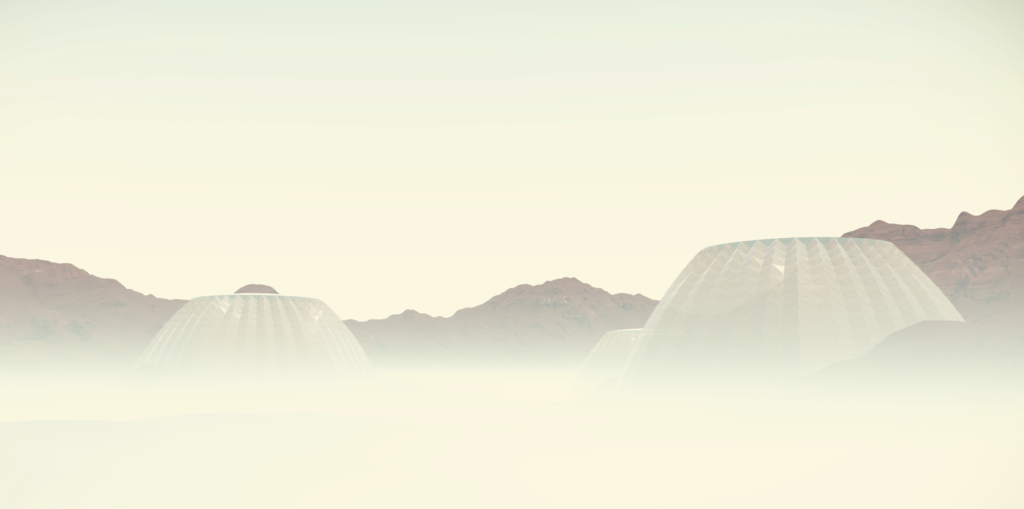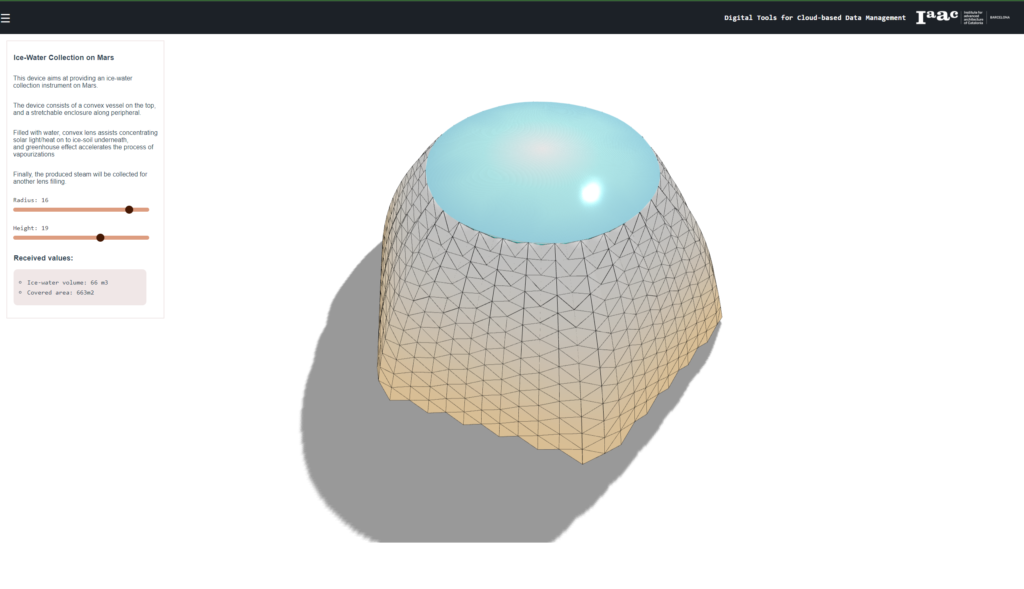Introduction
The course of Cloud-Based Data Management provides us an instrument for getting ideas across in an intuitive way.
Taking advantage of Rhino.Compute, and Vue applications, this project aims to establish an interactive displaying method for product showcase.
The subjected product is called ‘Ice-Water Collection on Mars’ which consists of a convex lens on top, and enclosed structure/envelope along peripheral.

Concept Development
It is discovered that water on Mars exists as ice in shallow Martian soil. The concept of this device is to extract water from the frozen mixture and is tailor-made to accommodate Mars’ unique conditions.
The transparent part on the top is a hollow vessel made up of curve Polycarbonate sheets. After fully-filled with water it will become a convex lens and can be used for concentrating solar light/heat onto ice-soil underneath; while the enclosed envelope will promote greenhouse effect which will accelerate the evaporation process.

The vapour produced can be collected for filling of other vessels for propagation purpose.
Delivery
‘Hops’ plugin component for Grasshopper was employed to create the targeted model and the output of .gh file was added to ‘assets’ folder as essential part of the entire web-development package.
Vue.js acting as core coding technology, and collaborated with standard HTML, CSS, JavaScript, the intended displaying interface is created.
Final feature of this web page includes ‘Brief Introduction’, and two sliders for controlling of ‘Radius’ and ‘Height’ respectively; In particular, the resulting ‘Volume of Water’ and ‘Covered Area’ can be achieved as dynamic data corresponding to the changes of parameters from controlling sliders.

The tasks are carried out via GitHub, GitHub Desktop, Visual Studio Code which include multiple pull-push/commit processes. Finally with faculties’ assistance, the submission branch is merged into main app website:
https://bimsc23.data-mgmt.com/
Inspiration
Cloud Data Management over the Internet involves many ‘debug’ and fine-tune works. It is necessary to undertake ‘back-and-forth’ experiment from time to time which could result in a time-consuming journey. Close advice and support from faculties have enabled our successful overleaping of hurdles. Also, peer’s interactions on Slack are critical and have proved to be an indispensable source of solutions.

